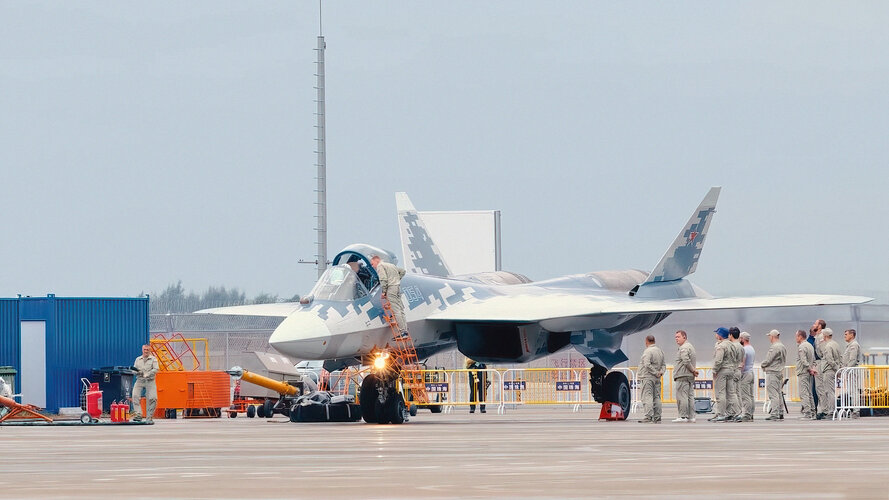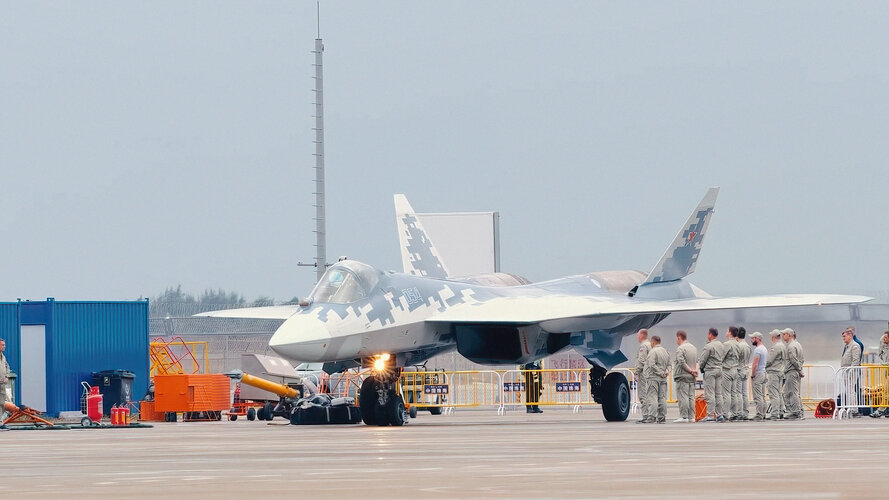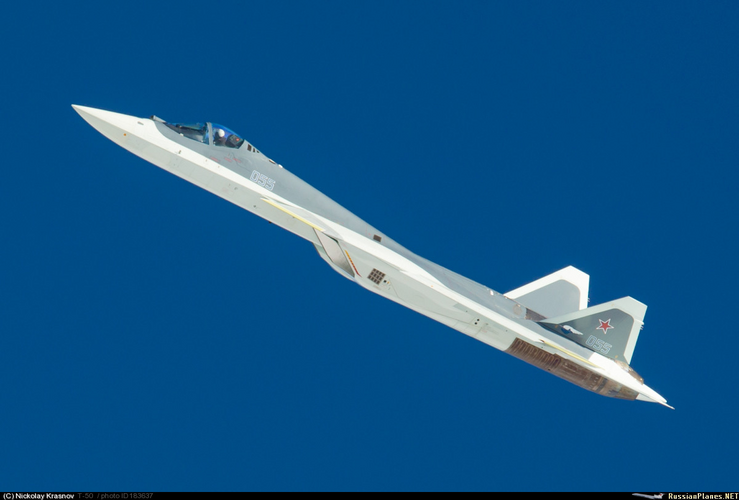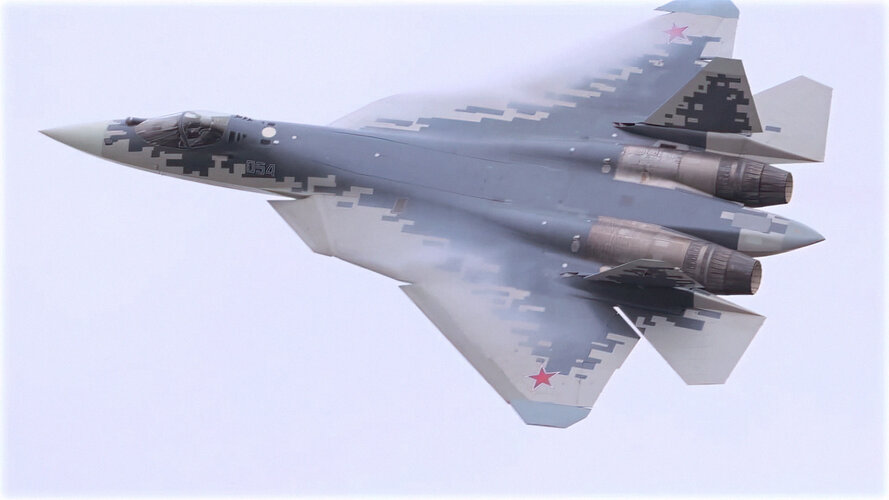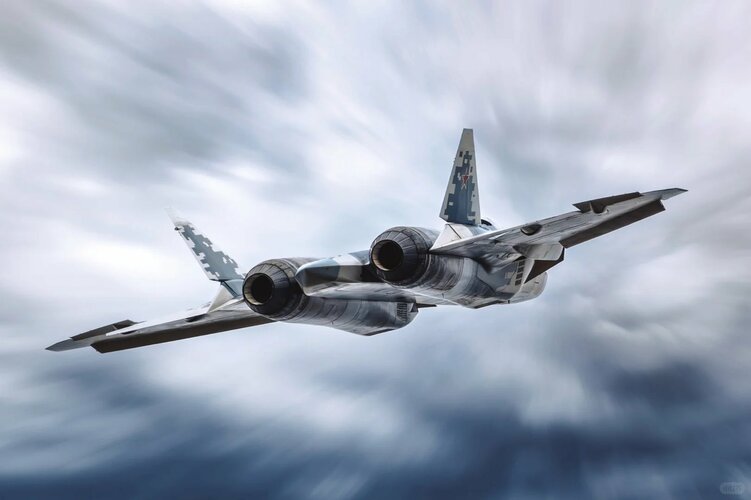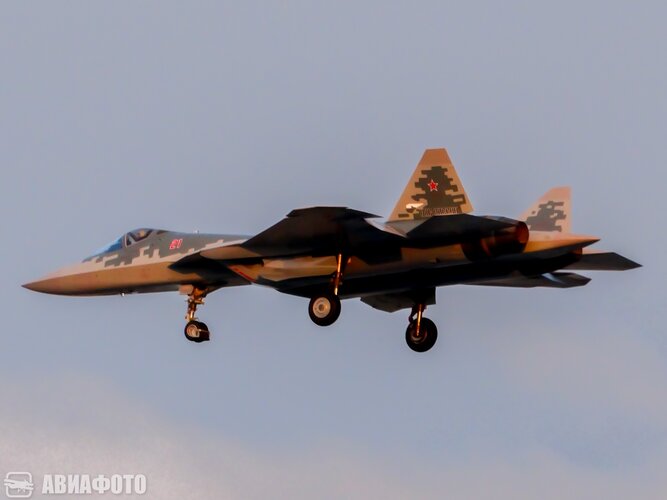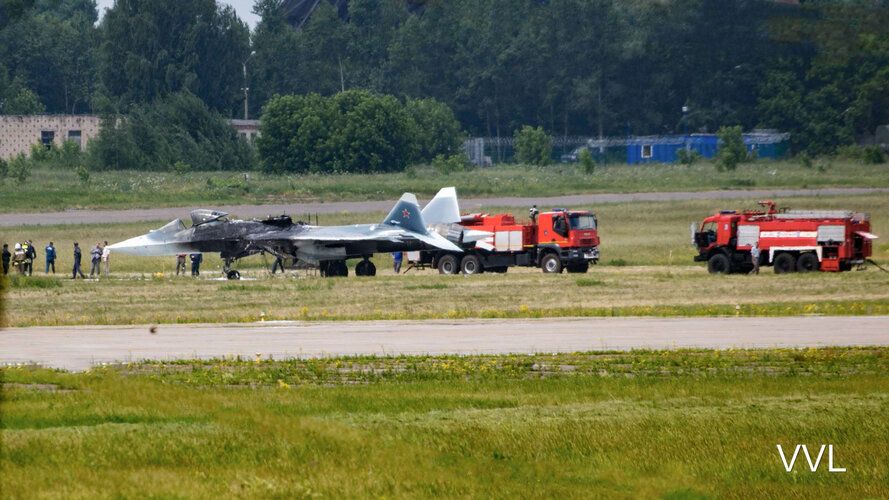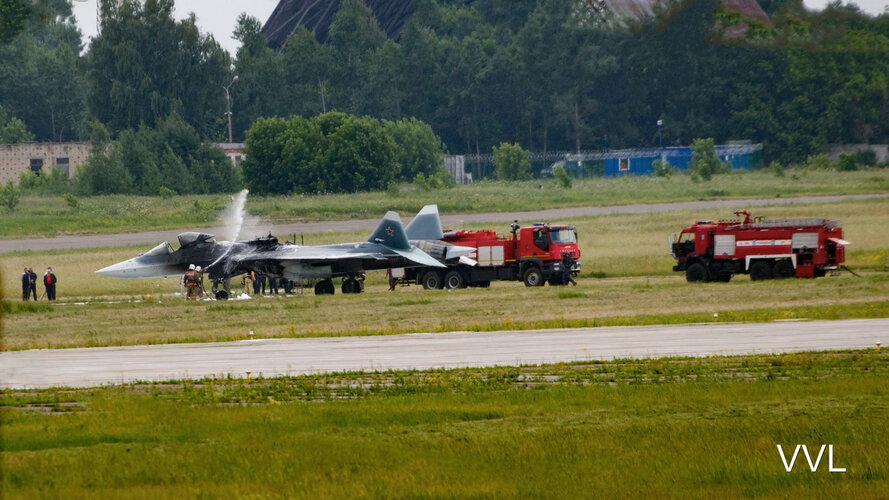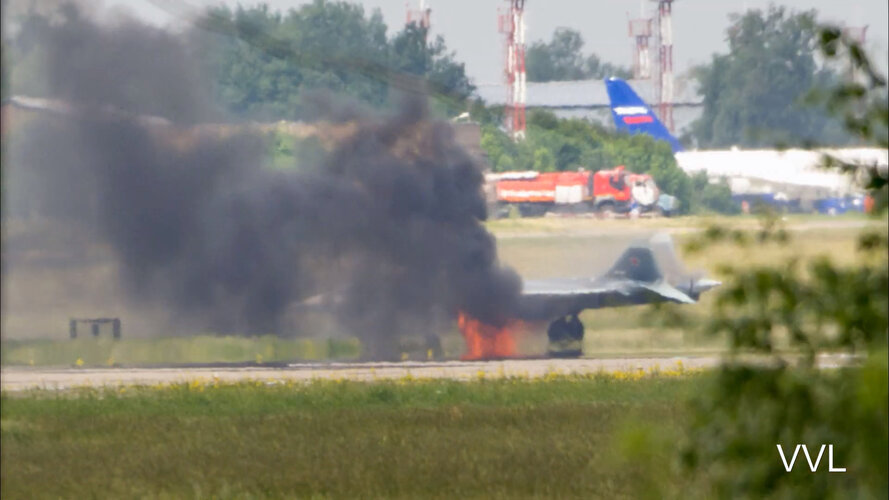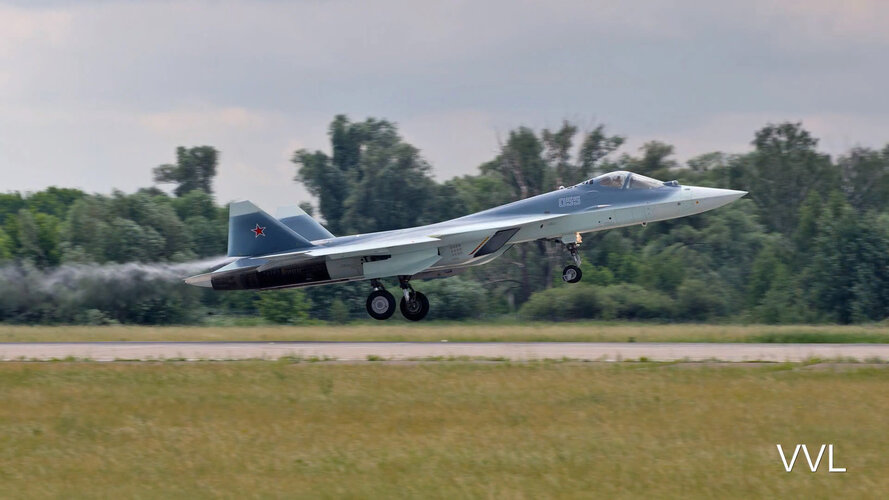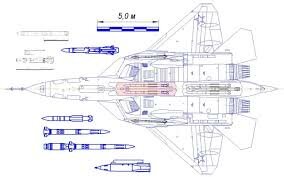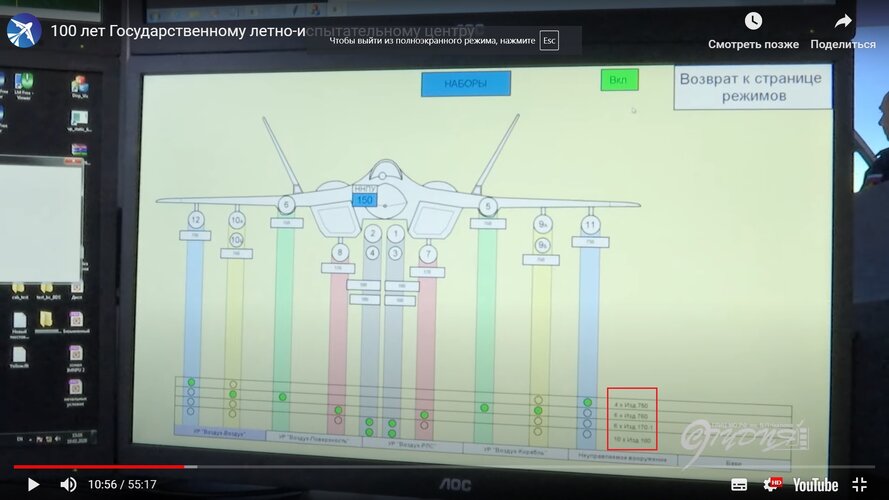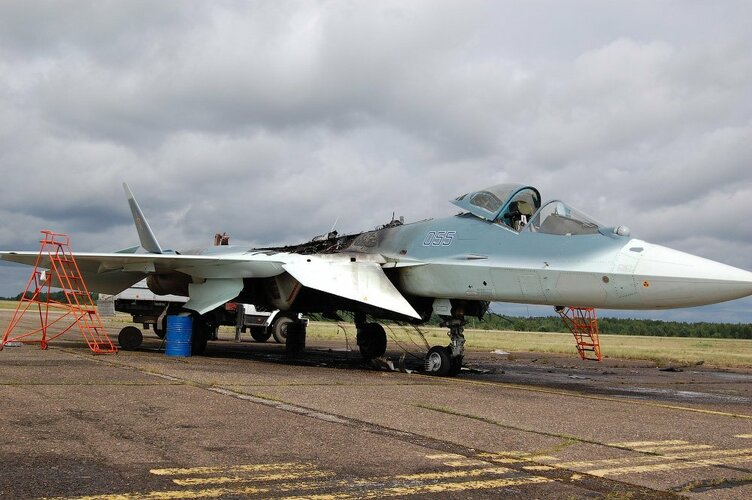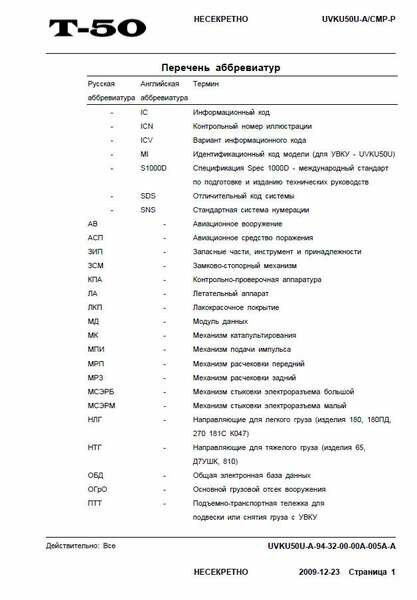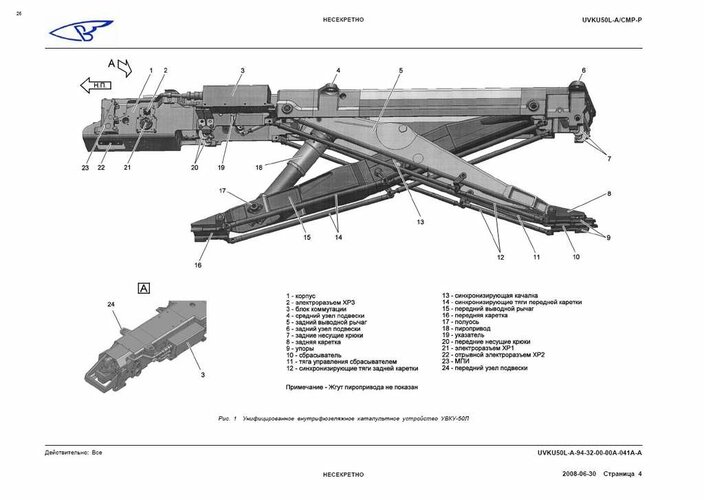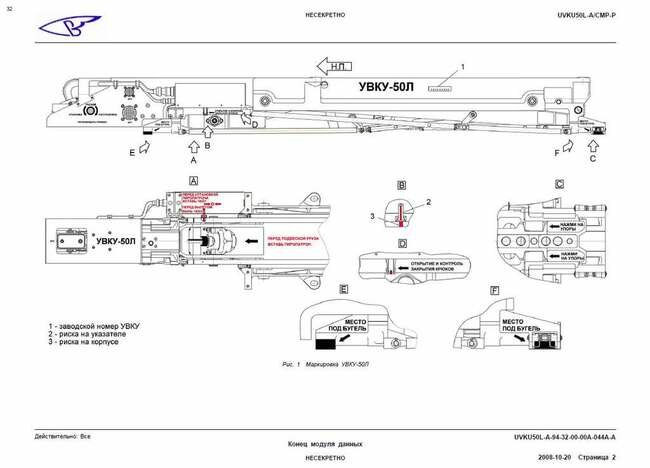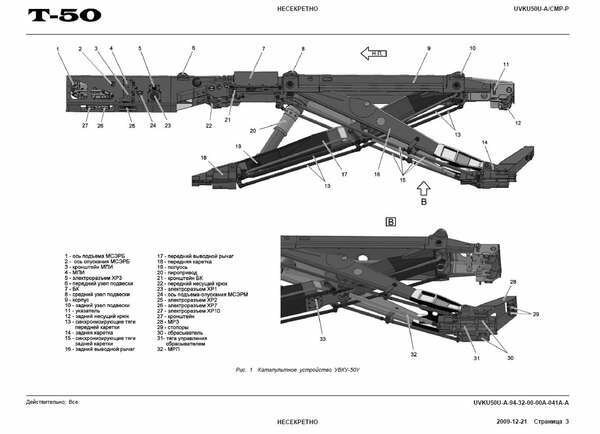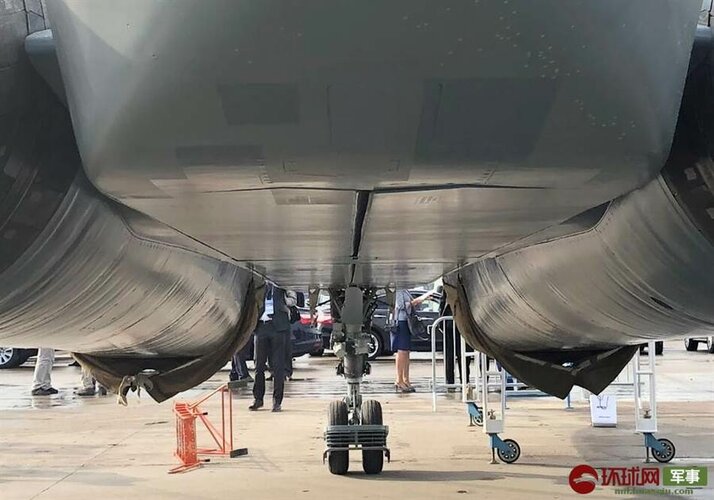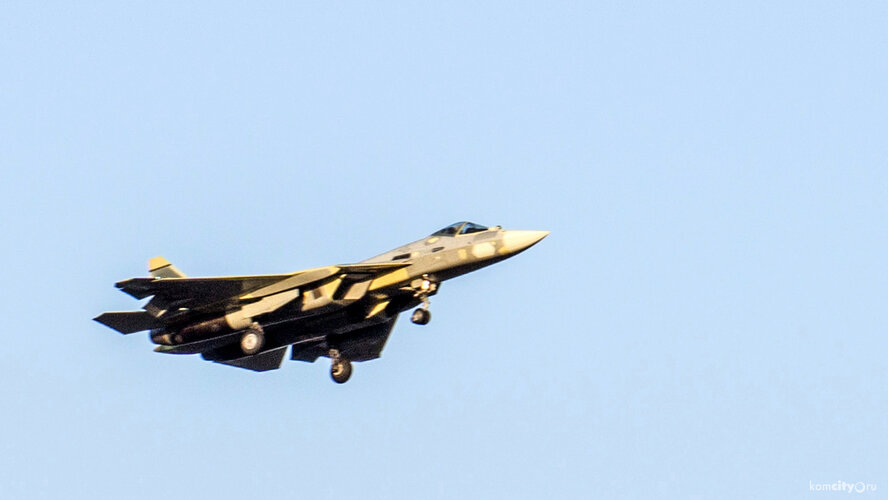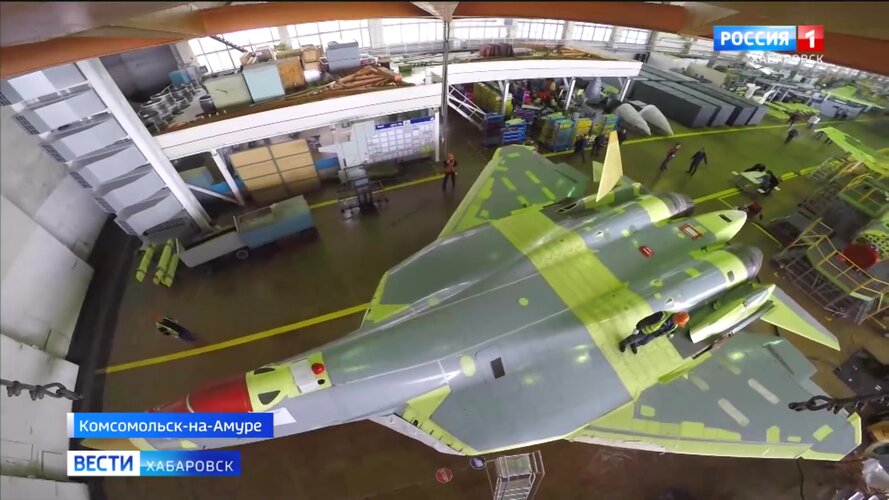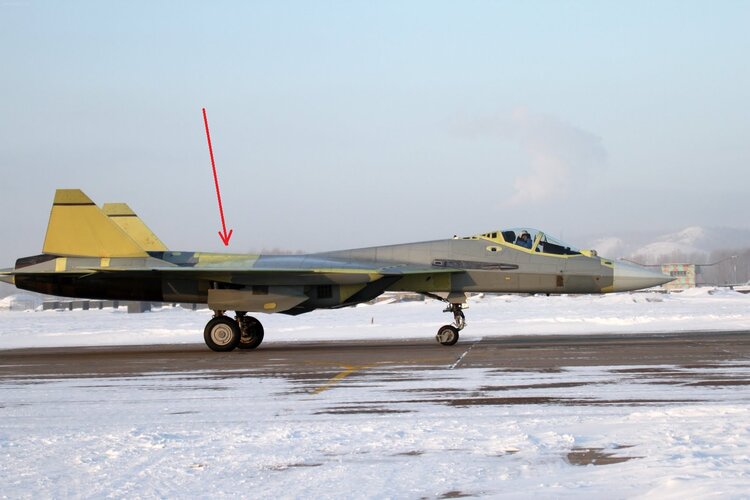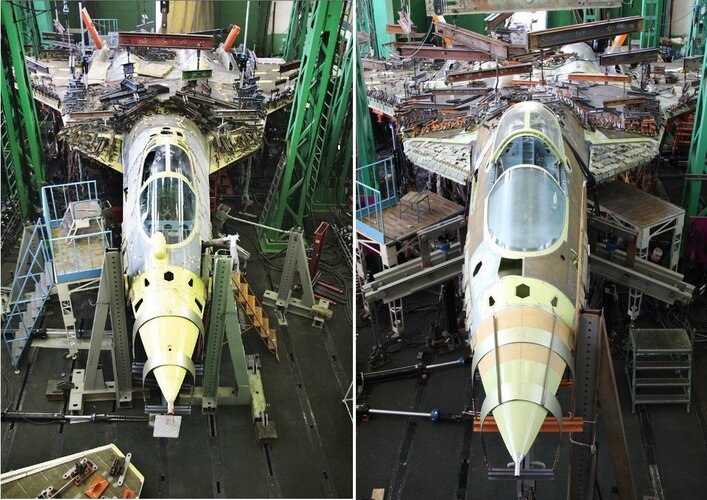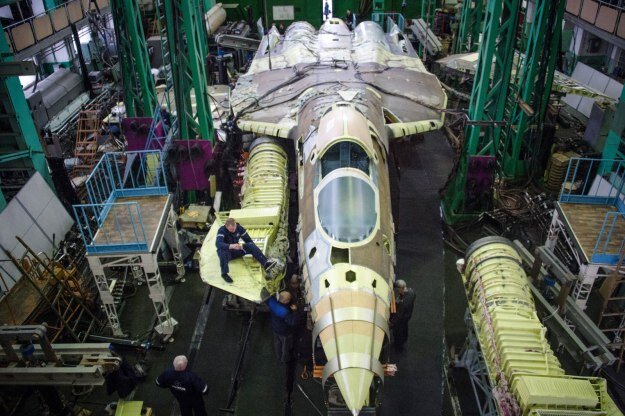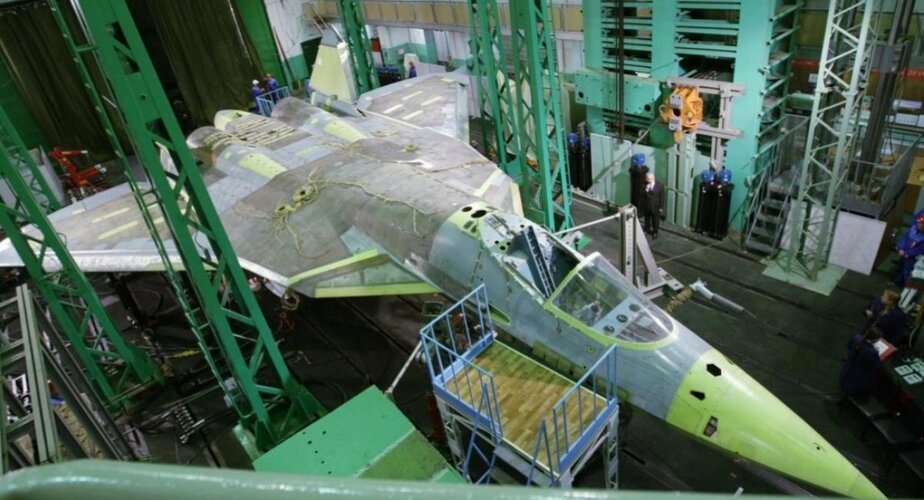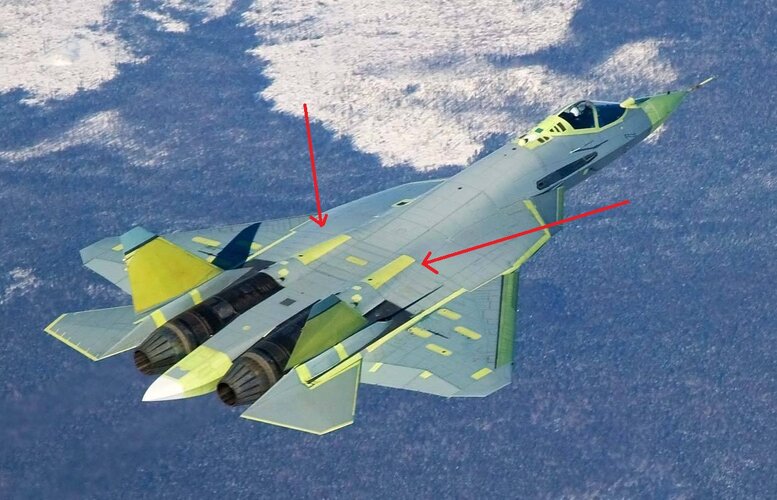It’s widely known and reported that the initial T-50 design did not have enough structural strength or fatigue life. In fact, after MAKS 2011, both T-50-1 and T-50-2 were grounded for about a year to reinforce their structure because of cracks from their demo flights even though it was at 5g. The large patch of metal on the back of the centroplane first appeared on T-50-4 and was retrofitted on -1 and -2 and all subsequent test and production aircraft.
It was the structural issues, along with other issues including fuel tank feeding, that resulted in a complete structural redesign, and all of the prior airframes up to T-50-6-1 were called 1st Stage while everything from T-50-6-2 after are called 2nd Stage, the structural difference, and the troubles with the VIAM 1461 Al-Li alloy being highlighted in both insider reports in 2016 and the recently published Sukhoi 85th anniversary book that corroborates it. The larger patch of metal on the back of centroplane that first appeared on T-50-4 also carried over to 2nd Stage and production aircraft.
As far as Su-57 empty weight, it’s more than the Su-27 simply because it needs more volume for internal weapons bays, more avionics, and also a bit higher fuel capacity. Put it another way, how can the Su-57 weigh less than 16.4 metric tons empty (the empty weight of the Su-27) like you imply, when it has more internal fuel capacity, larger internal weapons bay capacity, is longer and wider than the F-22 which weighs 19.7 metric tons empty? Even if you think Sukhoi doesn’t publish everything, there’s no confirmation for all this other stuff, and especially when some of it contradicts Sukhoi’s information.
5G ? Hm, that is highly unlikely.We must first count on the static ground tests of the T-50-0/KPO which was used for the static strength tests during 2009. I have pic of the T-50-1 with that big Alloy cross section on the upper side of the centroplane from 2011 but must find it. As soon as I do it, I will post it here.
About empty weight of the Su-57 as mentioned before, we must count on that it has 25% less construction details and parts then Su-27 ,has very light composite skin besides 'whatever Al-Li Alloy' that is for sure lighter then Al-Alloy used in the costruction of the old Su-27. About empty weight of the F-22A , I am even today suspicious that empty weight is almost 20 tons. Hm, how can it be with fighter which is constructed from six Ti-Alloys ( about 40% of the empty weight) and light composites ( about 25% ). For comparison, MiG-25 has the same empty weight of about 20 tons and 80% of all structural materials is in fact Steel/Steel Alloy.
Archive is like a gold mine. This is one article from 1995. Citation :
''THE US AIR FORCE and Lockheed Martin/Boeing have agreed to allow the F-22's empty weight to increase by 610kg, or 3%, to avoid pushing costs up. The growth comprises a 385kg weight-budget increase and a further 225kg allowance for uncertainty.
The F-22's projected empty weight has increased from 13,980kg at the preliminary design-review in 1992 to 14,365kg at the critical design-review, completed in February. Programme officials are confident that the additional 225kg allowance will not be needed.''
THE US AIR FORCE and Lockheed Martin/Boeing have agreed to allow the F-22's empty weight to increase by 610kg, or 3%, to avoid pushing costs up. The growth comprises a 385kg weight-budget increase and a further 225kg allowance for uncertainty. The F-22's projected empty weight has increased...

www.flightglobal.com
Now may I ask how empty weight of the serial/operational F-22A was increased from about 14.5 tons to about 19.5 tons? It is 'increased' by 5 tons.How it was possible?
About that Al-Alloy V95 ,one Indian document ,citation:
''Replacement and Reinduction of High Strength Aluminium Alloy B95High strength Al-Cu-Mg-Zn alloy, grade B95 is usedfor fabrication of many important load-bearing components in the airframe Russian combat-1 of mid 60’s aircraft. Cold rolled sheet, extruded bar and hot forging arethe basic raw materials for this grade. It is found that inRussian combat-2 (late 70’s aircraft) and Russian combat3 (early 80’s aircraft), the alloy grade B95 is partiallyreplaced by B93. However, in the subsequent aircraft,Russian combat-4 (mid 90’s aircraft) and Russian combat5 (early 2000’s aircraft), this alloy B93 once again isreplaced by B95 and B95PCh grades.''
Source: file:///C:/Users/Windows%207/Downloads/2005+May+Vol+57.+2-62-68.pdf
About Sukhoi or UAC presentation materials ,I can only write one thing. I believe more in what Sukhoi test pilots said and mentioned in so many interviews. Especially 'stories' from Sergey Bogdan, then Andrey Shendrick,Sergey Chernyshev,Rafael Suleymanov and others.
P.S.
About Alloy V-1461 ( real designation) , you were right,congrats. Source and page 201 :

cyberleninka.ru
One citation,source and transl. :
''РЗ: Что представляют собой алюминий-литиевые сплавы третьего поколения?
За последние годы наши ученые разработали современные высокопрочные и высокоресурсные алюминий-литиевые сплавы третьего поколения: В-1461, В-1469, В-1480 и В-1481, которые по своим характеристикам превосходят зарубежные аналоги и являются альтернативой основным конструкционным алюминиевым сплавам 1163 и В95, широко применяемым в отечественном авиастроении.''
Алюминий-литиевые сплавы широко применяются в мировом авиастроении для создания перспективных летательных аппаратов с улучшенными техническими характеристиками. Об истории, уникальных характеристиках и перспективах алюминий-литиевых сплавов журналу «Редкие земли» рассказал Генеральный директор...

rareearth.ru
''What are the third generation aluminum-lithium alloys?
In recent years, our scientists have developed modern high-strength and high-resource third-generation aluminum-lithium alloys: V-1461, V-1469, V-1480 and V-1481,which in their characteristics are superior to foreign analogues and are an alternative to the main structural aluminum alloys 1163 and V95, widely used in the domestic aircraft industry.''

